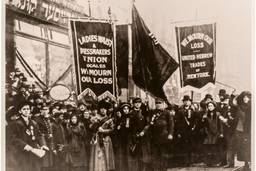How I Met, Impregnated and Promptly Disregarded Your Mother
The popular CBS sitcom isn’t the warmhearted delight viewers make it out to be.
Jude Ellison Sady Doyle

[SPOILER ALERT: This piece contains major spoilers for the series finale.]
Ted ends up with Robin.
Or, no, wait, let me start over: Ted ends up with another woman, and then with Robin.
Or, no, wait, let me start again: Ted ends up with another woman. Then that woman dies, no doubt in prolonged agony, as the result of a terminal illness. And then, Ted Mosby tells her grieving children (and, by extension, us) a nine-year-long story, which seems, in retrospect, to be about how he’d never really cared much about that woman at all, because he’d always preferred Robin.
Prior to its disastrous finale — I laughed for 10 minutes after it cut to black, and not because of anything the creators intended to be funny — there was much to enjoy about How I Met Your Mother. At the show’s best, it made for perfect hangover viewing. There are certain states of mind (recent break-ups, impending job loss, a truly inadvisable quantity of tequila the previous evening) for which the only possible remedy is distracting oneself until the whole thing blows over. Left alone, your brain will eat itself alive; all you need from your entertainment, then, is for it to be “watchable” and “pleasant.” And in those times of trial, if you put on How I Met Your Mother—with its tales of wife-hunting Ted Mosby (Josh Radnor) and the troupe of charming friends who accompany him on this quest — you can have a pretty decent time.
But it was never a great show. Not that you’d know it, from all the How I Met Your Mother encomiums published in advance of that finale. The Atlantic, for example, praises HIMYM for its sweet temperament and starry-eyed view of romance, calling it “a feel-good story about the importance of friendship and love,” and praising the show for how it “found nuance in the way people can still pursue a traditional vision of happiness.” They set its tone against the “sly sense of superiority” they find in contemporary sitcoms like Parks and Recreation and Modern Family. Meanwhile, over at the Los Angeles Times, HIMYM is venerated for being “the last of a vanishing breed, the romantic comedy about well-educated, pop culturally attuned young white people trying to find love and sex in the city,” with its bubbly version of New York 20-something life set in contrast to the bleak, masochistic landscape of Girls.
The use of key phrases like “traditional happiness” (and, er, “young white people”) in these accolades ought to cue us in to another “old-fashioned” fact about the show, though: It’s profoundly conservative. It takes place in a world in which the most extreme signifier of happiness, success, or personal growth is heterosexual, usually child-producing marriage.
Although HIMYM makes occasional stabs at hipness, it’s always had a strangely hokey and Middle American take on life in the Big Apple. Its Manhattan-centric New York is populated entirely with married or marriage-aspiring white heterosexual couples: The adorable domesticity of Lily Aldrin and Marshall Eriksen (Alyson Hannigan and Jason Segel) is set forth as the default “happy ending,” with all the other characters — monogamy-fetishizing Ted, unlucky-in-love career gal Robin Scherbatsky (Cobie Smulders), and mega-bro Barney Stinson (Neil Patrick Harris) — trying and failing to match up to it. It’s even in the title, for heaven’s sake: Ted, in his nearly decade-long saga, is not looking to find “his live-in girlfriend” or even “his wife”; like a middle-school class clown, his only possible punch line is “your mother.” Characters of color are all but invisible; they may score a few episodes (Kal Penn as a quickly thrown-over boyfriend, Morena Baccarin as a date with “crazy eyes”), but they’re quickly ushered out of the picture. Plus, despite the fact that the show features an openly gay actor (Harris), any mention of non-heterosexual life is largely confined to episodes that feature Wayne Brady as Barney’s gay brother.
And all of that was a problem before Barney Stinson became the breakout character sometime around Season 3. For those unfamiliar, Barney is actually the show’s most convincing New York archetype: The Finance Douche, a well-moneyed, menswear-obsessed, perpetually adolescent and openly misogynistic man who has a near-fetishistic attachment to his “bros” and scoffs at the idea that he could ever respect, let alone love, a human woman. He regularly prowls the streets of New York looking for heavily intoxicated women to have sex with, which he generally accomplishes by telling elaborate lies and/or pretending to be someone else. In a world where “rape by fraud” — that is, sexual contact obtained by representing oneself as a different person in order to gain consent — is a criminal offense in some states, and where having sex with a woman too drunk to give consent is rape no matter what, it is alarmingly hard to construct a logical argument that Barney is not a habitual rapist.
At the very least, he is a character whose contempt for women, and penchant for exploiting them, is his defining characteristic: the man once delivered an elaborate musical number about how women mattered less to him than his outfits. (It concludes with him lying to a woman so as to trick her into having sex.)
And yet, Barney is played by the powerhouse of theatrical charisma that is Neil Patrick Harris, and so by 2008, the show had decided he was a role model: As Ted mopes around with a succession of dead-end girlfriends, the creators give Barney the best lines, devote much of the story to his psychological growth, and eventually transform his bro-centric cosmology into a popular book tie-in. Which, for the record, has its own blog.
The other characters sometimes make vague noises about Barney’s behavior being gross, and HIMYM tries its best to sand the rough edges off of the character in later seasons — a sad story about a father who abandoned him here, a serious girlfriend there — but in the end, the show is too in love with the rude appeal of “player” Barney to ever quite retire his predatory antics. And it doesn’t help that plenty of young men adore him, too: Scratch the surface of the Internet, and you’ll find a whole bunch of guys who want to be as awesome as Barney.
Sadly, the work of redeeming Barney Stinson, and much of the show’s anti-woman undertone, seems to fall more or less entirely onto the shoulders of HIMYM’s female characters. The series’ lone spot of feminist-friendly light, Robin Scherbatsky — whose interests include whiskey, cigars, dogs, being a successful journalist and never, ever settling down and having kids under any circumstances—gets bent every which way in the service of the boys’ plots. First, she’s Ted’s unattainable dream girl; then, she becomes Barney’s motivation to improve himself by demonstrating to him that a girl can be “cool” enough to be worthy of sweet, all-important marital monogamy. The show’s last season was devoted to Robin and Barney’s wedding, despite the fact that, as Robin herself protested, her last sparks of character integrity blazing to light before disappearing entirely, “Nothing about me and Barney makes any sense.” Meanwhile, the other major female character, Lily — who can be intensely likable when written well, largely because she’s played by Alyson Hannigan — gets stuck in a series of plot lines which can be summed up with the phrase “has a baby.” Oh, and a long, unpleasant detour in the ninth season in which she prevents husband Marshall from taking his dream job. Because, surprise, she’s pregnant.
Which brings us to that disaster of a finale. Robin and Barney’s marriage, something the show had spent years trying to write its way into, is abruptly dismissed with an off-screen divorce. The Mother, whom we’ve spent eight seasons waiting to meet and the final season getting to know, killed off in a 30-second aside. Barney returns to his Bro Code antics before being subjected to the almighty influence of procreative heterosexuality and “civilized” (again!) by the birth of his infant daughter — though it’s less than likely that they’ll have a good relationship, seeing as how he refers to the actual woman raising her as “Number 31.” Robin, sans boyfriend, is condemned to a sad life of bitter spinsterhood, distancing herself entirely from the core group of friends she once loved now that she’s no longer dating Ted and/or Barney. We end where we began as viewers: With Ted Mosby, a man who regales his grieving children with a decade-long story about how she didn’t really matter that much, because what he’d actually like is to have sex with their “Aunt Robin.”
And that’s how we met the moral: As charming as HIMYM is, as lightweight and affable as its group of gifted actors has worked to make it seem, it has always been a profoundly retrogressive show, one in which women, frankly, didn’t matter. The ideal role for a woman, according to How I Met Your Mother, is as a wife, a mother, a corpse, an anonymous conquest who provides babies, an infant who can’t talk back when an avowed misogynist makes her the latest woman responsible for “changing him forever,” or— most importantly — an ultimately passive goal for some guy to win. This was a show in which the ideal of white, straight manliness and marriage mattered far more than any non-white, non-straight, or non-male people who happened to appear in it. So, for that, if nothing else: Good riddance to the “vanishing breed.” Its absence is making a hole for the rest of us to climb through.

I hope you found this article important. Before you leave, I want to ask you to consider supporting our work with a donation. In These Times needs readers like you to help sustain our mission. We don’t depend on—or want—corporate advertising or deep-pocketed billionaires to fund our journalism. We’re supported by you, the reader, so we can focus on covering the issues that matter most to the progressive movement without fear or compromise.
Our work isn’t hidden behind a paywall because of people like you who support our journalism. We want to keep it that way. If you value the work we do and the movements we cover, please consider donating to In These Times.
Jude Ellison Sady Doyle is an In These Times contributing writer. They are the author of Trainwreck: The Women We Love to Hate, Mock, and Fear… and Why (Melville House, 2016) and was the founder of the blog Tiger Beatdown. You can follow them on Twitter at @sadydoyle.







